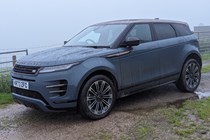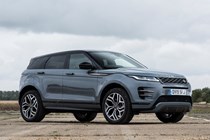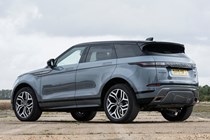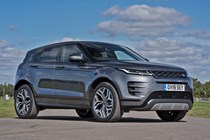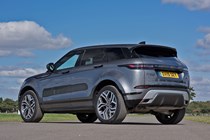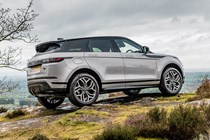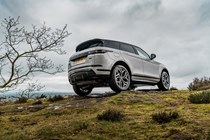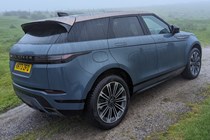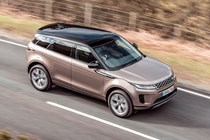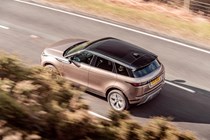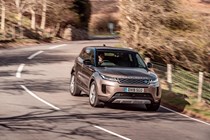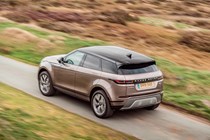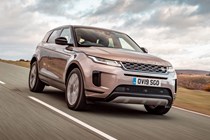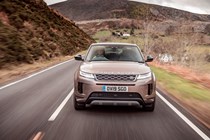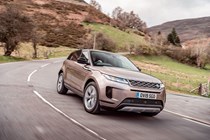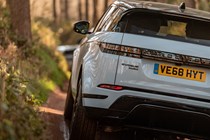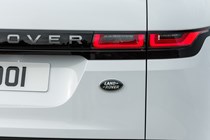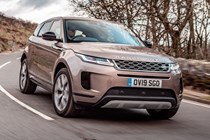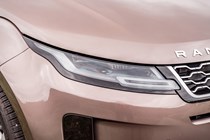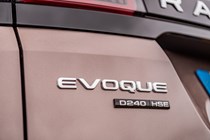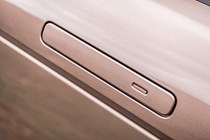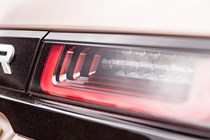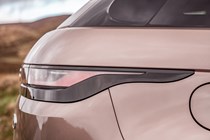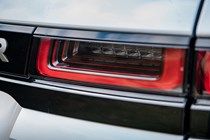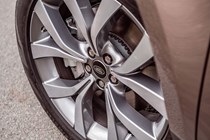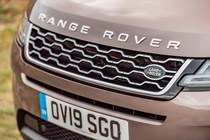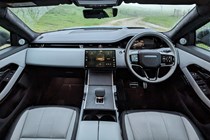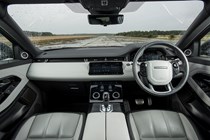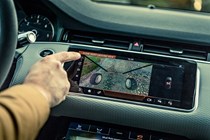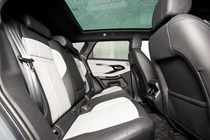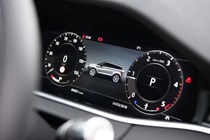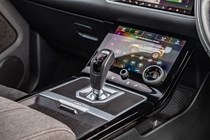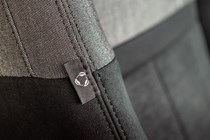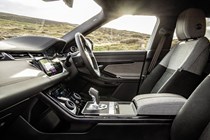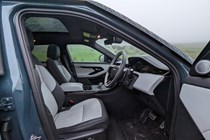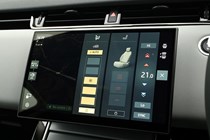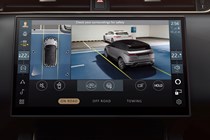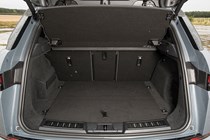
Range Rover Evoque engines, drive and performance
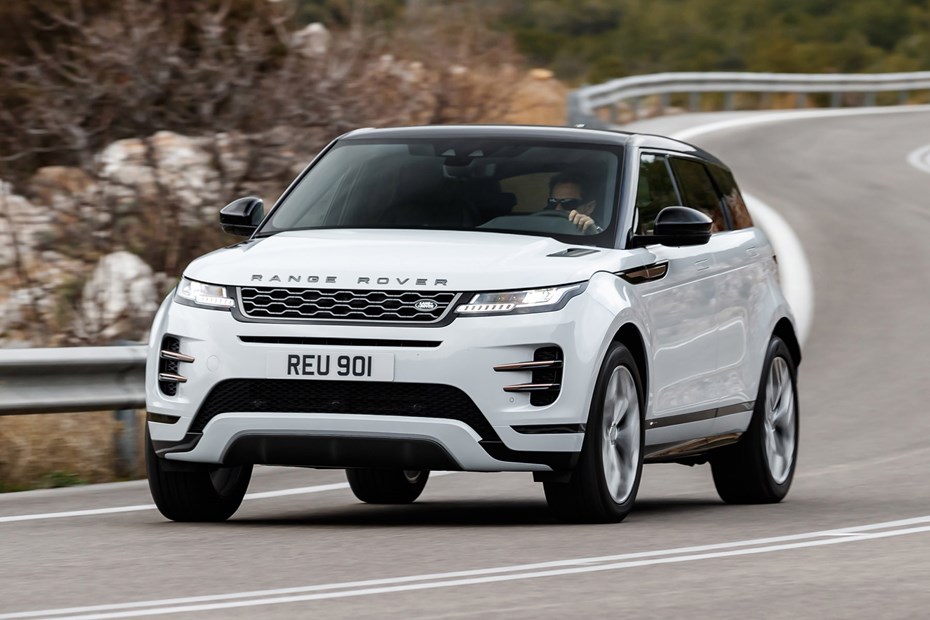
- Three petrol engines, three diesels, one PHEV
- Petrol engine is refined and revvy
- Diesel engine is punchy and quiet
Petrol engines
Land Rover has ensured there are plenty of choices for aspiring Range Rover Evoque buyers. There are four basic engine setups – the 2.0-litre petrol and diesel mild hybrids, a 1.5-litre plug-in hybrid (PHEV), and the 1.5-litre petrol without the plug-in bits. These are the one most people will chose, but we reckon they’re not the best option.
Having said that, all petrol engines are impressive in their refinement and performance. Its acceleration doesn’t feel as quick as the figures would suggest, and unlike the diesel, a petrol Evoque needs working hard to get into its stride. We found that flooring the throttle was often needed to keep up with the flow, which feels at odds with the luxury nature of this car. But the overriding impression of the petrol Evoque is one of unruffled calm when cruising.
The power unit is beautifully isolated and rarely do you hear it – even when you’re driving it hard. On the motorway, it’s settled and refined. The nine-speed automatic gearbox can be confusing at times. We found that when a quick burst of acceleration is needed, the transmission can be very lazy to respond. Other times, it can feel too responsive – pushing the accelerator pedal down halfway often raised an eyebrow due to a tendency to drop down two gears.
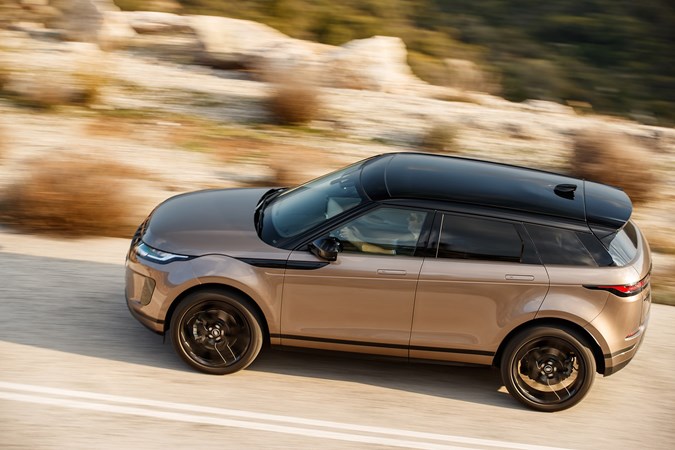
Diesel engines
For those who don’t want to go the whole hog with a plug-in hybrid, the we reckon that the diesels are probably the best all-rounders. They deliver decent performance and reasonable economy when driven gently. The entry-level 165hp unit is the most refined of the three, with all sounding quite sweet, and rarely does it feel slower than the D200, with 200hp.
Despite that, we can’t help but feel that the D200 unit really suits the Evoque. It’s punchy from low revs, and is impressively quiet compared with other JLR cars powered by this engine (they’ve learned a lot about installing them over the years). Although it doesn’t feel as quick as the performance figures hint at, rarely do you feel this is a heavy SUV.
It’s most responsive in Sport mode, but still can be caught on the hop. If you want to be sure of maximum punch, best change manually using the paddleshifters (Command Shift in Land Rover-speak).
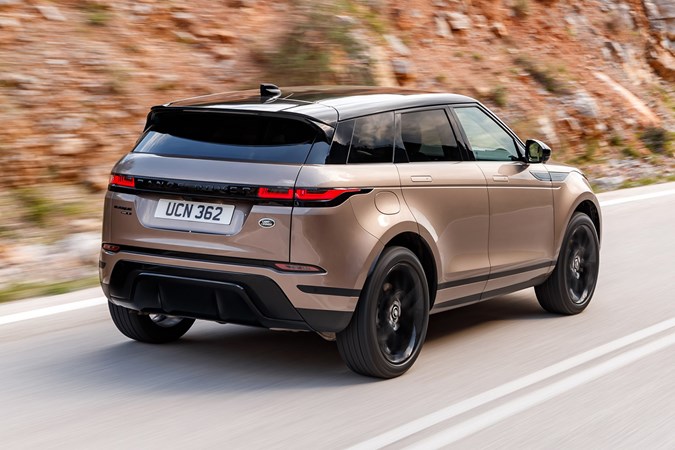
Hybrid engines
The Evoque is also available as a plug-in hybrid, badged P300e. This combines a 1.5-litre, three-cylinder petrol engine driving the front wheels with an electric motor propelling the rears. Offering low tax and impressive fuel economy, this one works for a lot of buyers who are looking to move away from diesel, or mainly cover shorter journeys.
Performance is responsive, and refinement is excellent – we sometimes found it very hard to tell when the petrol motor kicked in following a period of running in EV mode. However, despite having a long claimed battery-only range, it ran out of charge quite quickly, sometimes less than 40 miles in, which could prove frustrating, as a fair chunk of that silky smooth refinement would get up and go at that point.
Once the battery pack is depleted, the P300e certainly feels less fleet footed when forced to solely run on the small petrol engine. With 200hp available, this struggles to haul this two-tonne SUV – and that’s with just a driver on board. Downshifts take an age to happen, too, with a long pause between pulling the steering wheel paddle and the gearbox responding. That said, this appears to be a common trait on other plug-in hybrids we’ve driven.
Thankfully the engine remains smooth and quiet, but it’s slow to rev and feels like relatively hard work getting up to motorway speeds. If you can, limit the use of the petrol engine to cruising on the motorway/dual carriageway, when you can also recharge the battery at the same time in Save mode.
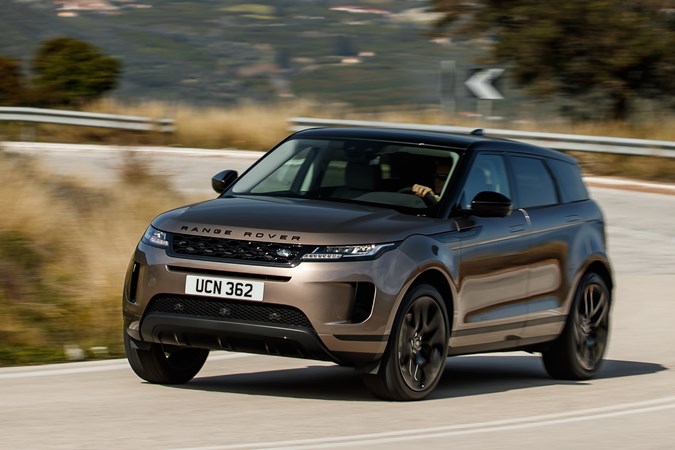
What’s it like to drive?
- Impressive roadholding and grip
- Responsive steering
- Comfortable on the move
One thing you can say about Land Rover is that it knows how to make an off-roader handle well on the road. It feels nimble, but dig a little deeper and it proves to have traded some of its agility for more of a comfortable and luxurious feel. On the whole, we like this comfort-biased approach.
In bends, it rolls a little, although the body control is good enough for this not to be an issue as it never feels anything other than composed. And as you’ll read below, the pay-off is worth it, as ride comfort and damping are excellent. The steering feel, too, is excellent – and overall we reckon it’s still the best compact SUV to drive.
In terms of ride comfort, the Evoque feels every bit like a baby Range Rover should. The low speed ride can be a little firm, but there’s an air of softness to it still, with a great level of isolation and suppleness the old one never had. Refinement is aided by the low levels of noise, too. The engines have been brilliantly isolated from the cabin and are pretty quiet at all times, even when heading towards the redline.
What’s it like off-road?
Thanks to the excellent Terrain Response 2 system, which automatically adjusts how the car behaves based upon what surfaces it detects it’s being driven on, the Evoque is a very capable off-roader only marred by a relative lack of ground clearance (compared with something like a Defender).
If you really want to, you can drive through water up to 600mm deep – that’s a 100mm increase over the old Evoque, but still 300mm less than the Defender or Discovery. The driving position is spot on, and the low-speed throttle response is excellent, exactly what’s needed for trickling around at low speed.
Overall, it’s excellent to drive off-road – both through ample in-built ability and the use of clever systems such as Ground View Technology. It’s tough, comfortable and easy to drive.


